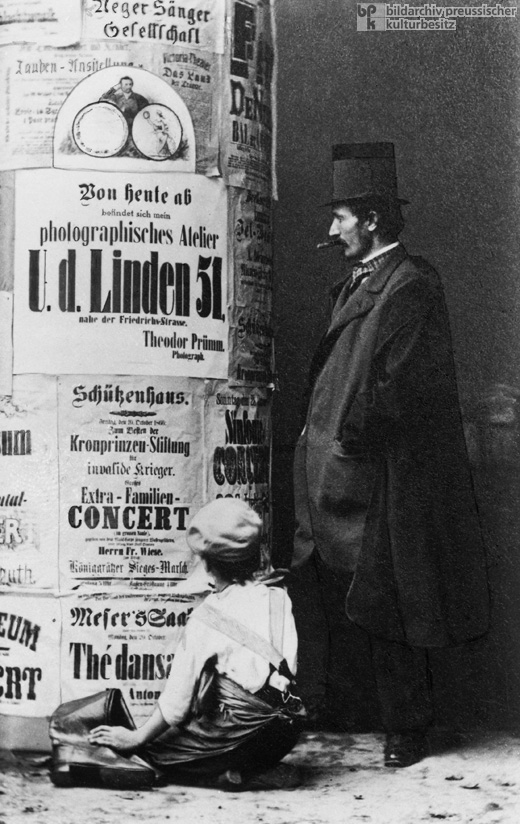













INTRODUCTION | DOCUMENTS | IMAGES | MAPS | EDITOR
|
In order to control the "wild" posting of advertisements and announcements on buildings, walls, and trees, Berlin's police president negotiated a contract with the royal printer Ernst Listfaß (1816-1874) for the installation of 150 commercial advertising pillars throughout the city. Litfaß had seen these sorts of pillars in Paris, where they had become ubiquitous during the first half of the 19th century. Until 1865, Litfaß had a profitable monopoly on advertisement pillars in Berlin, in exchange for which he also agreed to publish current news on his pillars (in addition to advertisements and announcements). The authorities welcomed the pillars not only because they curbed the excessive postings that had once overwhelmed the city’s surfaces, but also because they were able to censor placards before they were posted. Advertisers who purchased space on the pillars were assured that their advertisements would remain uncovered and visible. Today, there are still about 67,000 “Litfaß pillars” in Germany.
© Bildarchiv Pruessischer Kulturbesitz |
 print version
print version return to image list
return to image list previous image
previous image
